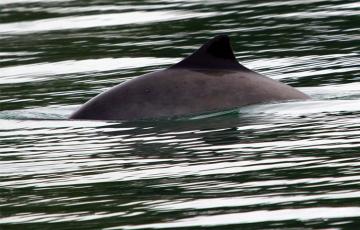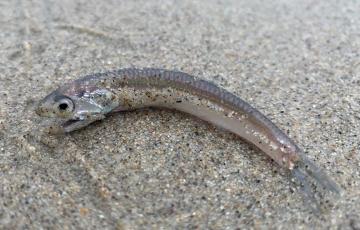Feature Publication Archive

Gold, Z., Brown, S. D., Collins, A., Girard, M., Goodwin, K., McAllister, S. M., Meyer, C., Parsons, K., Patin, N., Rouse, G., Sala, L., Satterthwaite, E., Seid, C., Theroux, S., and R. Wetzer (2025): Introduction to Developing DNA Reference Barcode Sequences. Zenodo, 10.5281/zenodo.14867762
We created a guide to provide a framework for generating and disseminating voucher-based DNA reference barcode sequences. It provides a general step-by-step approach to collecting and processing specimens/vouchers, as well as generating and reporting the resulting nucleotide sequence data. We describe protocols for molecular lab work for generating both reference gene sequences (“barcodes”) as well as genome skimming to derive full mitogenomes and nuclear ribosomal repeat regions (“ultra-barcodes”). Our guiding principles include FAIR (Findable, Accessible, Interoperable, Reusable) and CARE (Collective Benefit, Authority to Control, Responsibility, and Ethics) data practices to ensure resulting specimen and sequence data will be publicly accessible.
We intend these guidelines to be useful for both novice and expert systematists and molecular biologists alike. Here we focus our examples on marine taxa and habitats, but this resource is widely applicable to most aquatic and terrestrial biodiversity and environments.

Dorsal fin of a harbor porpoise. Credit: NOAA Fisheries
Parsons, K. M., S. A. May, Z. Gold, M. Dahlheim, C. Gabriele, J. M. Straley, J. R. Moran, K. Goetz, A. Zerbini, L. Park, and P. A. Morin (2024): Using eDNA to Supplement Population Genetic Analyses for Cryptic Marine Species: Identifying Population Boundaries for Alaska Harbor Porpoises. Molecular Ecology, 0, e17563, https://doi.org/10.1111/mec.17563
In collaboration with scientists at NOAA Fisheries, Ocean Molecular Ecology scientist Zack Gold participated in a environmental DNA (eDNA) study focused on the hidden structure of Alaska's harbor porpoise populations. To learn more about the project, read NOAA Fisheries featured story entitled: New Clues Reveal Genetic Diversity among Alaska's Harbor Porpoises.

Rabinowitz, C.N., S.D. Brown, S.M. McAllister, A.K. Winans, J.E. Keister, and M.P. Galaska (2023): The complete mitochondrial genome of Cyphocaris challengeri (Amphipoda: Cyphocarididae). Mitochondrial DNA Part B, 8(10), 1128-1131, https://doi.org/10.1080/23802359.2023.2270206
Environmental DNA (eDNA) metabarcoding has become a widely used, non-invasive tool to assess the biodiversity of marine systems. The sampling methodology relies on curated reference databases (i.e., a library of organismal sequences). While some well-known species possess full mitochondrial genome references, most only have representatives from one or a few mitochondrial genes in these databases, or no reference sequences at all, which limits the accuracy of eDNA as a tool for biodiversity monitoring. Our group (OME) is actively working to fill in the gaps to improve species identification and as a result our monitoring efforts.
The amphipod Cyphocaris challengeri is a globally distributed, highly abundant species that plays an important role in the pelagic food web. Before this study, there were no mitochondrial genomes for the Family Cyphocarididae, and no mitochondrial sequences at all for the Cyphocaris genus. We sequenced the mitochondrial genome for this species to enhance our ability to detect this species and its close relatives in the environment.

Gold, Z., R.P. Kelly, A.O. Shelton, A.R. Thompson, K.D. Goodwin, R. Gallego, K.M. Parsons, L.R. Thompson, D. Kacev, and P.H. Barber (2023): Archived DNA reveals marine heatwave-associated shifts in fish assemblages. Environmental DNA, 00, 1-14, https://doi.org/10.1002/edn3.400
Quantitative environmental DNA (eDNA) approaches improve our ability to characterize the impacts of marine heatwaves on marine ecosystems, revealing unprecedented novel species assemblages. Work by Pacific Marine Environmental Laboratory (PMEL), the California Cooperative Oceanic Fisheries Investigations (CalCOFI), and partners revealed marked shifts in California Current Large Marine Ecosystem fish larvae communities across a 23-year time series with large changes in response to the 2014–2016 marine heatwave. The high abundances of both Northern anchovy and southern mesopelagic (i.e., more tropical) species were unique in the previous 70 years of CalCOFI surveys, suggesting that climate-associated ecosystem shifts will be without modern analog.
Our results demonstrate the power of eDNA metabarcoding from ethanol preserved bulk samples to unlock important insights into community dynamics over time, creating novel research opportunities from preserved sample collections.These efforts are valuable to providing higher resolution zooplankton and fish larvae data from archived NOAA sample collections like CalCOFI and Ecosystem Fisheries-Oceanography Coordinated Investigations (EcoFOCI). These higher resolution approaches may... more »
Buck, J.J.H., et al. (2019): Ocean data product integration through innovation—The next level of data interoperability. Front. Mar. Sci., 6, 32, Oceanobs19: An Ocean of Opportunity. ... more »


